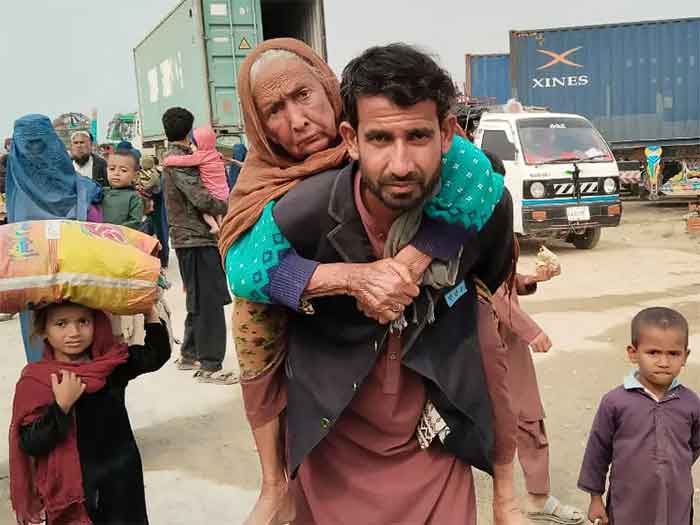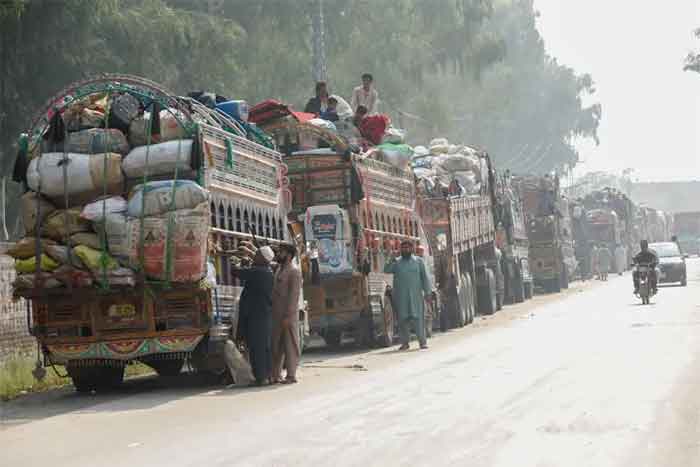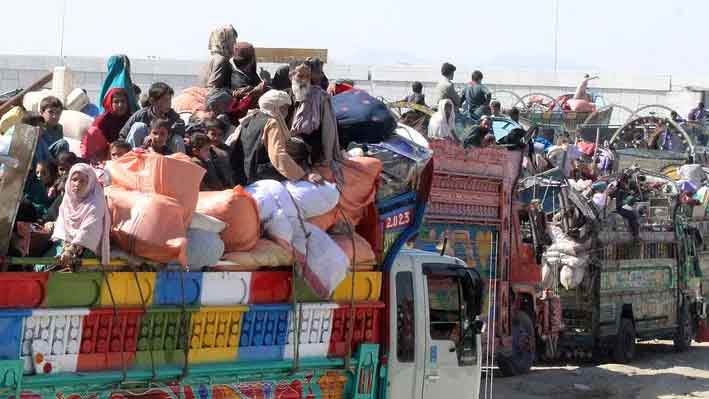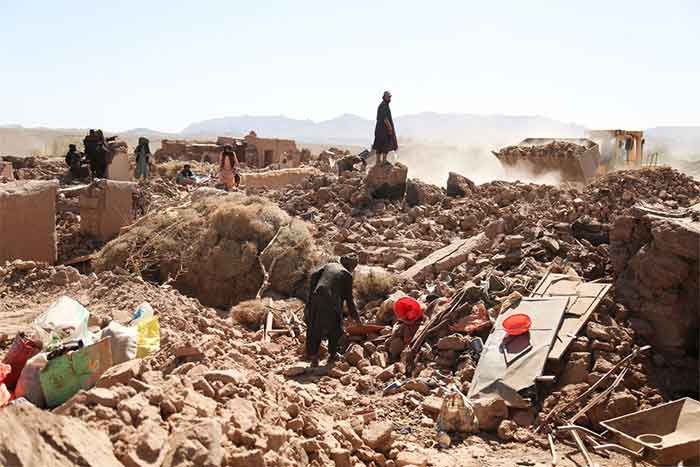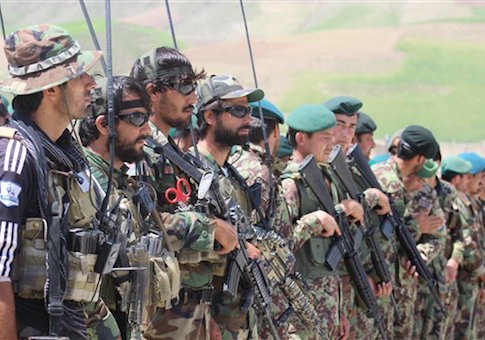
U.S. general: Afghan forces could face ‘bad possible outcomes’
A May 2, 2021, Washington datelined AP report said:
Afghan government forces face an uncertain future and, in a worst-case scenario, some “bad possible outcomes” against Taliban insurgents as the withdrawal of American and coalition troops accelerates in the coming weeks, the top U.S. military officer said Sunday.
Gen. Mark Milley described the Afghan military and police as “reasonably well equipped, reasonably well trained, reasonably well led.” He cited Afghan troops’ years of experience against a resilient insurgency, but he declined to say they are fully ready to stand up to the Taliban without direct international backing during a potential Taliban offensive.
The chairman of the Joint Chiefs of Staff, a veteran of the war in Afghanistan, spoke in an interview with Associated Press and CNN reporters flying with him from Hawaii to Washington just hours after the formal kickoff of the withdrawal.
Asked whether he believes the Afghan forces can hold up under increased strain, Milley was noncommittal.
“Your question: The Afghan army, do they stay together and remain a cohesive fighting force or do they fall apart? I think there’s a range of scenarios here, a range of outcomes, a range of possibilities,” he said. “On the one hand you get some really dramatic, bad possible outcomes. On the other hand, you get a military that stays together and a government that stays together.”
“Which one of these options obtains and becomes reality at the end of the day? We frankly do not know yet. We have to wait and see how things develop over the summer.”
He said there is “at least still the possibility” of a negotiated political settlement between the government in Kabul and the Taliban. This, he said, would avoid the “massive civil war” that some fear could happen.
Within about two months of the U.S.-led invasion in October 2001, the country’s Taliban rulers were removed from power and militarily defeated. But within several years, they had regrouped, rearmed and reasserted themselves, taking advantage of sanctuary in neighboring Pakistan. In recent years, the Taliban achieved a battlefield stalemate with U.S.-supported Afghan government forces.
Milley noted that the Afghan military has operated in recent years with less reliance on U.S. and coalition advisers. Among the key exceptions are special operations commandos and the defense ministry.
“But for the most part, there is no advisers out there anyway,” he said in one of his few interviews since President Joe Biden announced April 14 that all U.S. military personnel will withdraw this summer. Milley said the commonly cited total of 2,500 troops rises to 3,300 if special operations forces are counted. “We are taking it down to zero,” he said.
After the withdrawal is over, the U.S. will provide unspecified “capabilities” to the Afghan military from other locations, Milley said. He did not elaborate on this, but other officials have said those “over-the-horizon” arrangements for supporting the Afghan military have yet to be solidified.
Milley said it is possible that the withdrawal will be finished before the Sept. 11 target date announced by the White House. He said that date reflects the estimated maximum amount of time needed to move all U.S. and coalition troops, as well as large amounts of equipment, out of the country.
“I don’t want to put precise dates on it,” he said.
U.S. commander warns against attacks on troops in Afghanistan as deadline passes
A May 1, 2021, Kabul datelined Reuters report said:
The commander of foreign forces in Afghanistan warned on Saturday it would be a mistake for insurgents to attack foreign troops still present in the country after the passing of a May 1 deadline for withdrawal agreed last year with Taliban militants.
U.S. Army General Scott Miller’s comments followed what a U.S. forces spokesman described as “ineffective indirect fire” at an airfield in Kandahar that had caused no injuries or damage. The Taliban did not immediately respond to request for comment on whether it was involved in the incident.
Kabul was braced on Saturday for a reaction from the Taliban, with a visibly increased military presence and security at checkpoints. A security source said the Afghan capital was on “high alert”, while military patrols and security were being increased in main cities around the country.
In a video posted to Twitter by a spokesman for U.S. Forces in Afghanistan following Saturday’s incident in Kandahar, General Miller said it would be a mistake to move towards attacking foreign troops.
“Make no mistake, we have the military means to respond forcefully to any type of attacks against the coalition and the military means to support the (Afghan) security forces,” he said.
Violence against Afghans has escalated in recent weeks, with more than a hundred Afghan security forces personnel killed. On Friday, a huge blast in eastern Logar killed dozens as they broke their fast during the holy Islamic month of Ramadan.
It was not clear who was behind the attack, but the government blamed the Taliban who said they were looking into the matter.
Washington has also warned that if foreign forces were attacked while carrying out the withdrawal they would defend themselves “with all the tools at our disposal.”
Experts said the Taliban threats should be taken seriously, but a number of factors meant that full-scale attacks against foreign targets could be averted, as the Taliban continued negotiations.
“We can’t rule out attacks,” said Michael Kugelman, deputy director of the Asia Program at the Woodrow Wilson Center in Washington. “That said, the Taliban is less likely to attack foreign forces now that it knows there is a specific date when they will be leaving.”
Negotiations ongoing
In the lead up to May 1, sources said there was a flurry of meetings as negotiations with the Taliban over the deadline extension continued.
The U.S. special envoy for Afghanistan, Zalmay Khalilzad, had met with the Taliban’s head of political office, Mullah Baradar, in Doha, a Taliban spokesman said on Friday.
Also on Friday, the eve of the agreed deadline, envoys from Russia, China, Pakistan and the U.S. held meetings with Taliban officials and Afghan government negotiators in the Qatari capital. The Taliban said they discussed the peace process and their request that Taliban leaders be removed from sanctions lists.
Sources also said a delegation of Taliban political leaders had been in Pakistan’s capital Islamabad this week.
Two Taliban sources and one official source said negotiations had revolved around the proposed deadline extension in exchange for the U.S. not getting involved in Afghan military operations against the Taliban; getting the Taliban to commit to re-joining the Turkey conference if they were provided with an agenda on what would be discussed there; and possibly declaring a ceasefire over the upcoming Eid holiday.
Pakistan’s foreign office did not immediately respond to request for comment.
Fuel truck fire in Kabul kills 7
Gasoline tanker trucks burst into flames in Kabul overnight, killing at least seven people and starting large fires that caused power cuts to some parts of the Afghan capital, officials said on Sunday.
The tankers were parked in northern Kabul and burst into flames late on Saturday. Fourteen people were injured.
Authorities were still investigating how the fire started and did not yet know the cause.
Two security sources had earlier told Reuters they believed it was caused by a Taliban rocket fired in the area. But Taliban spokesman Zabihullah Mujahid has said they were not involved.
The city remains on high alert, with officials bracing for attacks from the insurgent Taliban over the continued presence of foreign troops in the country.
Afghanistan’s Chamber of Commerce spokesman Jan Aqa Naweed said that hundreds of containers that held both fuel and foodstuffs worth millions of dollars had been damaged.
U.S. airstrike in response to failed Taliban rocket attack on day formal withdrawal begins
As U.S. and NATO forces began their formal withdrawal from Afghanistan on Saturday, violence broke out in multiple parts of the country, including near a base that’s home to remaining U.S. soldiers. The incidents appear to signal the challenges that likely lay ahead during the transition period.
On Friday, the evening before the launch of the final withdrawal phase, a truck bomb exploded outside of a guesthouse in Pul-e-Alam in Logar Province, killing at least 27 people. No one has claimed responsibility for the attack, but the Afghan government blames the Taliban. If that was indeed the case, The New York Times writes, then “it would be the most overt signal yet that the deal the Americans reached with the group” last year “is off.” The Taliban has never ceased with attacks and assassinations, but Friday night’s bombing “appeared to represent a shift in tactics,” the Times notes.
Afghan base overrun
Elsewhere on Friday, Taliban insurgents overran an Afghan army base and captured 25 soldiers, while U.S. military spokesman Col. Sonny Leggett tweeted that Kandahar Airfield, one of the bases where a small contingent of U.S. and NATO soldiers remain, “received ineffective firing” on Saturday. There were no injuries or damages. The U.S. military then responded to the rocket attack with an airstrike on a Taliban position, CNN reports.
Counting the costs of America’s 20-year war in Afghanistan
An AP report said:
America’s longest war, the two-decade-long conflict in Afghanistan that started in the wake of the Sept. 11 terrorist attacks, killed tens of thousands of people, dogged four U.S. presidents and ultimately proved unwinnable despite its staggering cost in blood and treasure.
This final chapter, with President Joe Biden’s decision to pull all American troops from Afghanistan by the 20th anniversary of the terrorist attacks, has prompted a reckoning over the war’s lost lives and colossal expenditure.
Here is a look at the spiraling cost of America’s campaign — the bloodshed, wasted funds and future consequences for the war-battered nation teetering on the brink of chaos.
Lives
Afghans have paid the highest price. Since 2001, at least 47,245 civilians have been killed in the war as of mid-April, according to the Costs of War project at Brown University, which documents the hidden costs of the post-9/11 wars.
According to the U.N. Watchdogs say the conflict has killed a total of 72 journalists and 444 aid workers.
The Afghan government keeps the toll among its soldiers secret to avoid undermining morale, but Costs of War estimates the war has killed 66,000 to 69,000 Afghan troops.
The war has forced 2.7 million Afghans to flee abroad, mostly to Iran, Pakistan and Europe, the U.N. said. Another 4 million are displaced within the country, which has a total population of 36 million.
Meanwhile, 2,442 U.S. troops have been killed and 20,666 wounded in the war since 2001, according to the U.S. Defense Department. It is estimated that over 3,800 U.S. private security contractors have been killed. The Pentagon does not track their deaths.
The conflict also has killed 1,144 personnel from the 40-nation NATO coalition that trained Afghan forces over the years, according to a tally kept by the website iCasualties. The remaining 7,000 allied troops also will withdraw by Biden’s 9/11 deadline.
Dollars
The U.S. has spent a stunning total of $2.26 trillion on a dizzying array of expenses, according to the Costs of War project.
The U.S. Defense Department’s latest 2020 report said war-fighting costs totaled $815.7 billion over the years. That covers the operating costs of the U.S. military in Afghanistan, everything from fuel and food to Humvees, weapons and ammunition, from tanks and armored vehicles to aircraft carriers and airstrikes.
Washington has poured over $143 billion into that goal since 2002, according to the latest figures from the Special Inspector General for Afghanistan Reconstruction (SIGAR).
Of that, $88 billion went to training, equipping and funding Afghan military and police forces. Another $36 billion was spent on reconstruction projects, education and infrastructure like dams and highways, the SIGAR report said. Another $4.1 billion has gone to humanitarian aid for refugees and disasters. The campaign to deter Afghans from selling heroin around the world cost over $9 billion.
Unlike with other conflicts in American history, the U.S. borrowed heavily to fund the war in Afghanistan and has paid some $530 billion in interest. It has also paid $296 billion in medical and other care for veterans, according to Costs of War. It will continue to pay both those expenses for years to come.
Following the money
Much of the billions lavished on huge infrastructure projects went to waste, the U.S. inspector general discovered. Canals, dams and highways fell into disrepair, as Afghanistan failed to absorb the flood of aid. Newly built hospitals and schools stood empty. Without proper oversight, the U.S. money bred corruption that undermined government legitimacy.
Opium
Despite the costly counternarcotics campaign, opium exports reached record heights. Despite the billions in weapons and training to Afghan security forces, the Taliban increased the amount of territory they control. Despite vast spending on job creation and welfare, unemployment hovers around 25%. The poverty rate has fluctuated over the years, reaching 47% through 2020, according to the World Bank, compared to 36% when the fund first began calculating in 2007.
“We invested too much with too little to show for it,” said Michael Wahid Hanna, a senior fellow at the Washington-based Century Foundation.
Cost of living
Although few want to prolong the war interminably, many fear its final end may jeopardize Afghanistan’s modest gains in health, education and women’s rights, made in the early years as the U.S. expanded the economy and toppled the Taliban, which had imposed tough strictures on women.
Since 2001, life expectancy has increased to 64 years from 56, the World Bank says. Maternal mortality has more than halved. Opportunities for education have grown, with the literacy rate rising 8% to roughly 43%. Life in cities has improved, with 89% of residents having access to clean water, compared to 16% before the war.
Child marriage has declined by 17%, according to U.N. data. Girls’ enrollment in primary school has nearly doubled, and more women have entered college and served in Parliament. These figures still pale compared with global standards.
But more broadly, the failure of U.S.’s ambitions to build a stable, democratic Afghanistan has left the country mired in uncertainty as U.S. forces leave. The nation’s history tells of civil war that follows foreign invasions and withdrawals.
“For better or worse, the U.S. has a serious stabilizing presence right now, and once that’s gone there’s going to be a power vacuum,” said Michael Callen, an Afghanistan economy expert at the London School of Economics. “In the 20 years’ war, there’s going to be a whole lot of scores that need to be settled.”
GET COUNTERCURRENTS DAILY NEWSLETTER STRAIGHT TO YOUR INBOX

